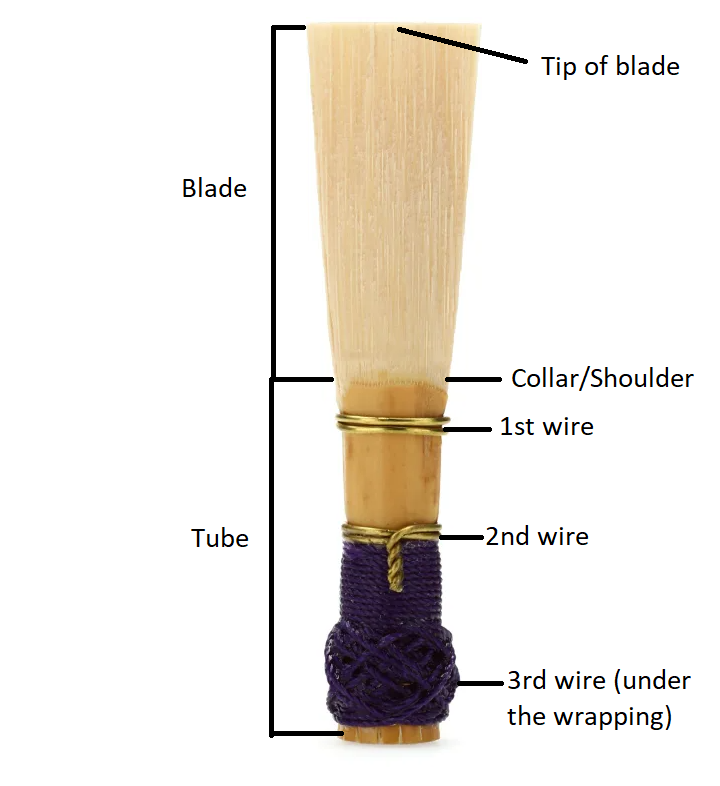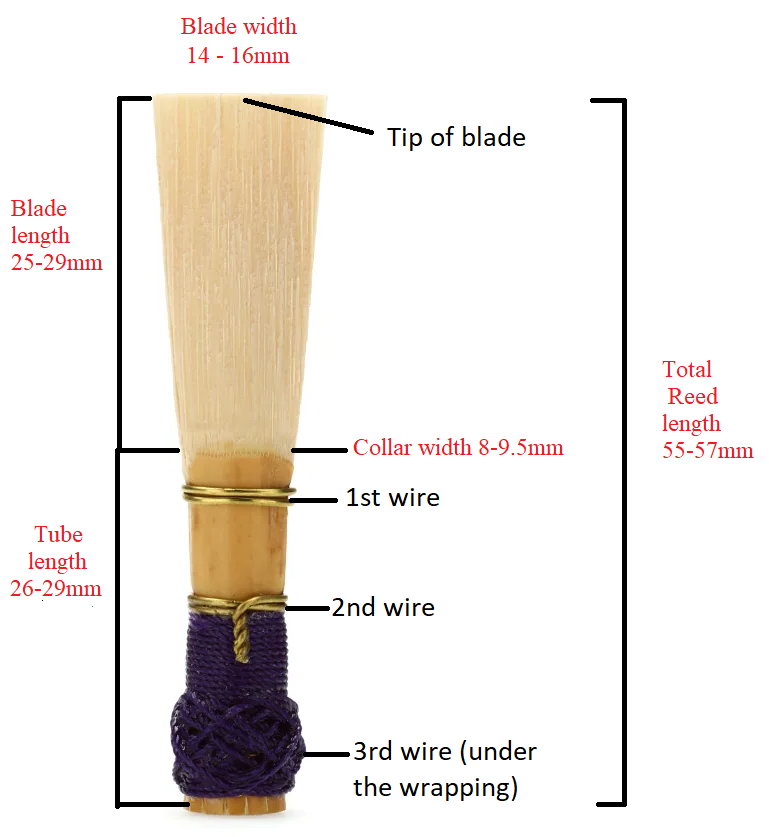THE BASSOON REED

The blade of the reed is the part that goes in the mouth when playing. The blades of a finished reed will have the bark removed and will be scraped to meet specific parameters so that it will vibrate easily. The blades of a reed can be adjusted using a knife, file, and/or sandpaper.
The tip of the blade is the end that goes in your mouth. The tip is the part your tongue will touch when you articulate notes.
The collar is located where the bark of the tube meets the reed blade. Some reeds are made with a distinct ledge at this point, and some have no discernable collar at all. Some bassoonists use the term shoulder instead of collar.
When you hold a reed, hold it by the tube. The tube of the reed is covered in bark and has been formed to create a circular opening at the end. The bottom end of the tube is the part that goes on the bocal. It must be very round, have no gaps, and needs to fit between 7-9mm on the bocal.
There are three wires on the tube.
Top (1st) wire: This wire is responsible for keeping the tip of the reed open. It also controls how much your lips need to work to play the reed.
Middle (2nd) wire: This wire affects tone quality and resistance of the reed. It also affects the tip opening, but to a lesser extent than the first wire.
Bottom (3rd) wire: The wire determines how round the open end of the tube will be. It is also called the “bocal wire.” Unlike the first and second wires, the third wire is covered by wrapping so it cannot be adjusted without removing the wrapping.
Length & Width of the Bassoon Reed
- A wider reed favors the low register while a narrower reed favors the upper register.
- A longer reed is generally lower in pitch while a shorter reed is generally higher in pitch.
- A heavier reed will require more air and more embouchure while a lighter reed will require less air and less pressure from the embouchure. However, a heavier reed will withstand a stronger embouchure better than a lighter reed.
Bassoon reeds are not standardized because there is no one kind of reed that is perfect for all instruments or players. There are an almost infinite variety of shapes and sizes. Unless you are buying reeds from a professional, there will not be a choice of shape or length. The better reeds sold in music stores and through online sites are made to a set of dimensions that will allow them to be played in tune without too much effort.
Range of reed lengths and widths:
- Total Reed length: 55-58 mm
- Tube length butt to collar: 27-29 mm
- Blade length collar to tip: 26-29 mm
- Blade width at tip: 14-16 mm
- Blade width at collar: 8-9.5 mm
Some bassoonists prefer a short, wide reed while others prefer a long, narrow reed; and others like something in between. Some bassoonists also prefer a very light reed that is easy to blow while others want a heavier reed with more resistance to blow against. Most manufactured (commercially produced in bulk) reeds use an average length and width shape aiming to reach the largest number of buyers.


Feedback/Errata